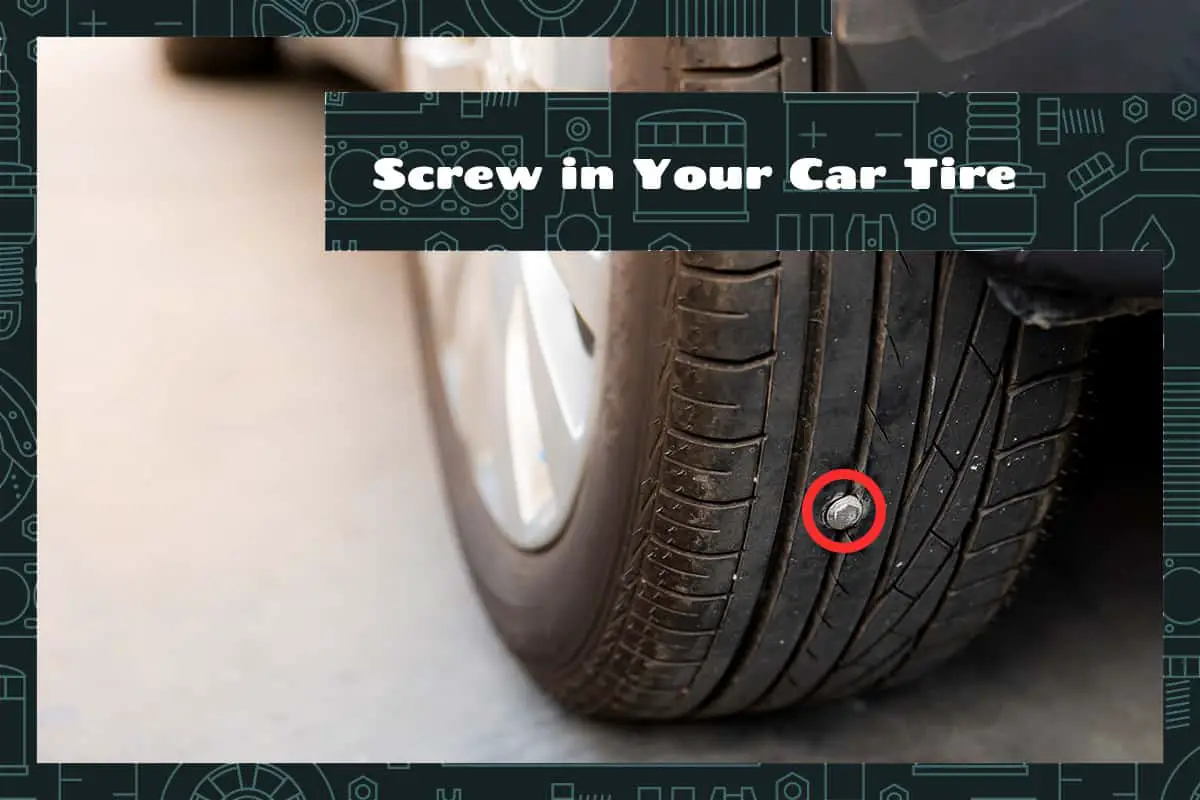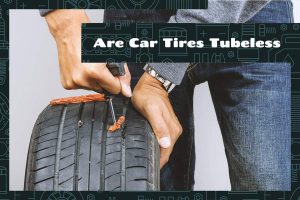Tires are the workhorses of any vehicle. They endure miles of diverse terrains, from rough gravel roads to slick city streets—all while supporting the vehicle’s weight and providing a smooth ride. So, it’s no surprise that occasionally they fall victim to stray screws or other sharp objects that can puncture them.
Driving with a screw embedded in your tire can lead to rapid air loss, a potential blowout, or further tire damage. The safest approach is to either use a puncture repair kit or seek professional assistance to remove it and mend the tire.
In this guide, we will walk you through the implications of having a screw in your tire, immediate actions to take, and DIY solutions for removing said screw from said tire.
What Happens When a Screw Is in Your Tire

Having a screw embedded in your tire is more than just a minor annoyance. When a tire gets punctured by a screw, a series of events is set in motion, which, if left unaddressed, can lead to undesirable outcomes. The details below should convince you that you need to remove the screw from your tire ASAP!
1. Potential Damage to the Tire
When a screw penetrates your tire, it creates a pathway for air to escape. The severity of the air leak largely depends on the size and location of the screw. A small screw lodged in the thick part of the tread may cause a slow leak, giving you ample time to seek repairs. However, larger screws, or those closer to the sidewall, can lead to rapid air loss, as the sidewall is more flexible and less robust than the tread.
2. Safety Risks
A tire punctured by a screw can drastically alter the vehicle’s handling characteristics. The immediate concerns include:
- Loss of Pressure: As the tire loses air, your vehicle may pull to one side, making steering and handling unpredictable. However, this may also be a sign of other less-distressing issues, such as a missing tire air cap.
- Decreased Braking Efficiency: A deflating tire has a reduced contact patch, the area of the tire that touches the ground, affecting your braking capability. A more severe cause of this symptom is brake fad.
- Risk of Blowout: If the puncture causes a rapid loss of air, there’s a higher risk of a blowout, especially at high speeds, which can lead to loss of vehicle control.
3. Long-Term Impacts
Failing to address this problem in a swift manner can lead to devastating long-term effects on your tires and car’s performance.
- Premature Tire Wear: A punctured tire often wears out faster, especially if it’s continuously losing air. This uneven wear can result in the need for early tire replacement.
- Suspension Issues: Driving on a damaged tire can put undue stress on the vehicle’s suspension system, potentially leading to premature wear of components.
- Decreased Fuel Efficiency: A deflating tire can decrease fuel efficiency, which translates to significant fuel cost increases. Address the problem sooner and you won’t have to spend needlessly.
- Compromised Handling: With a damaged tire, your vehicle’s handling might never be the same, especially if the tire’s internal structure is compromised.
Initial Steps to Take
As with many vehicle emergencies, your immediate reaction can determine the severity of the situation and how it evolves.
Safely Pull Over
The moment you suspect there’s an issue with a tire—whether due to a sudden change in your car’s handling or a tire pressure warning light—you need to find a safe place to stop. Do not brake suddenly or swerve, as this can be dangerous, especially at high speeds. Instead, reduce your speed gradually and signal your intentions to other drivers.
Assess the Situation
Before inspecting the tire, make sure you’re out of harm’s way. If you’ve pulled over on a busy road, it might be safer to remain inside the vehicle with seat belts fastened. If it’s safe to exit, check the affected tire visually.
Identify the screw’s position: is it in the tread or near the sidewall? Take note of the tire’s pressure—does it appear significantly deflated? These observations can help you decide on the best next steps and provide valuable information if you need to describe the situation to a professional.
Avoiding Further Damage
While it might be tempting to immediately remove the screw, doing so can cause a rapid loss of air if the tire isn’t already completely flat. Instead, consider the following:
- Drive Sparingly: If you’re close to your destination or a repair facility, you might opt to drive there slowly, but avoid long distances. Excessive driving with a screw in the tire can cause further internal damage.
- Avoid High Speeds: Faster speeds increase the risk of a blowout. If you need to continue driving, do so at a reduced speed.
- Monitor Tire Pressure: If your car has a tire pressure monitoring system, keep an eye on it to ensure the affected tire’s pressure doesn’t drop dangerously low.
- Have a Kit Handy: Keeping a basic tire repair kit in your car can be invaluable. These kits often contain tools and materials to plug a puncture temporarily, allowing you to reach a service station or your home safely.
DIY Solutions

“Can I fix this myself?” is something you may ask when there’s a screw in your car’s tire. Thankfully, for those inclined towards a bit of hands-on repair, there are DIY solutions available.
Puncture Repair Kits
Puncture repair kits have grown in popularity due to their convenience and effectiveness for minor tire punctures. They typically include a reaming tool, plug insertion tool, and a set of plugs or patches.
These kits can offer an on-the-spot repair, reducing the need for towing or a spare tire. Compared to professional services, repair kits are a more economical upfront solution. They’re suitable for fixing punctures caused by screws, nails, and other similar objects.
Temporary Sealants
Another popular DIY solution is the use of temporary sealants. These are usually aerosol cans filled with a sealing compound and compressed air. When released into the tire, the sealant covers and seals the puncture while also inflating the tire.
This is one of the fastest methods to seal a puncture and re-inflate a tire. There’s no need for reamers or insertion tools, making it a cleaner process. However, These sealants are meant for short-term fixes, so only use them when you’re within driving distance of a repair facility.
When to Consider Changing the Tire
While DIY solutions offer quick fixes, there are situations where the best option is to replace the tire:
- Location of Puncture: If the screw is close to the sidewall or has damaged a critical part of the tire, patching might not ensure safety.
- Size of Damage: Large screws causing significant punctures might be beyond the capability of standard repair kits or sealants.
- Age and Condition of the Tire: An old, worn-out tire with a puncture might be a sign that it’s time for a new tire rather than a repair.
FAQs
1. How long can I drive with a screw in my tire?
Driving with a screw in your tire isn’t advisable for long distances. Depending on the screw’s size and location, you might be able to drive for a short period—enough to get to a nearby repair shop. However, there’s a risk the tire could lose air more rapidly, leading to a flat or even a blowout.
2. Is it safe to remove the screw myself?
If the screw is fully embedded and creating a tight seal, pulling it out might cause the tire to lose air quickly, leading to rapid deflation. It’s best to remove it in a controlled environment where you can address any immediate loss of pressure, such as near a repair facility or when you have tools and materials to plug the puncture.






